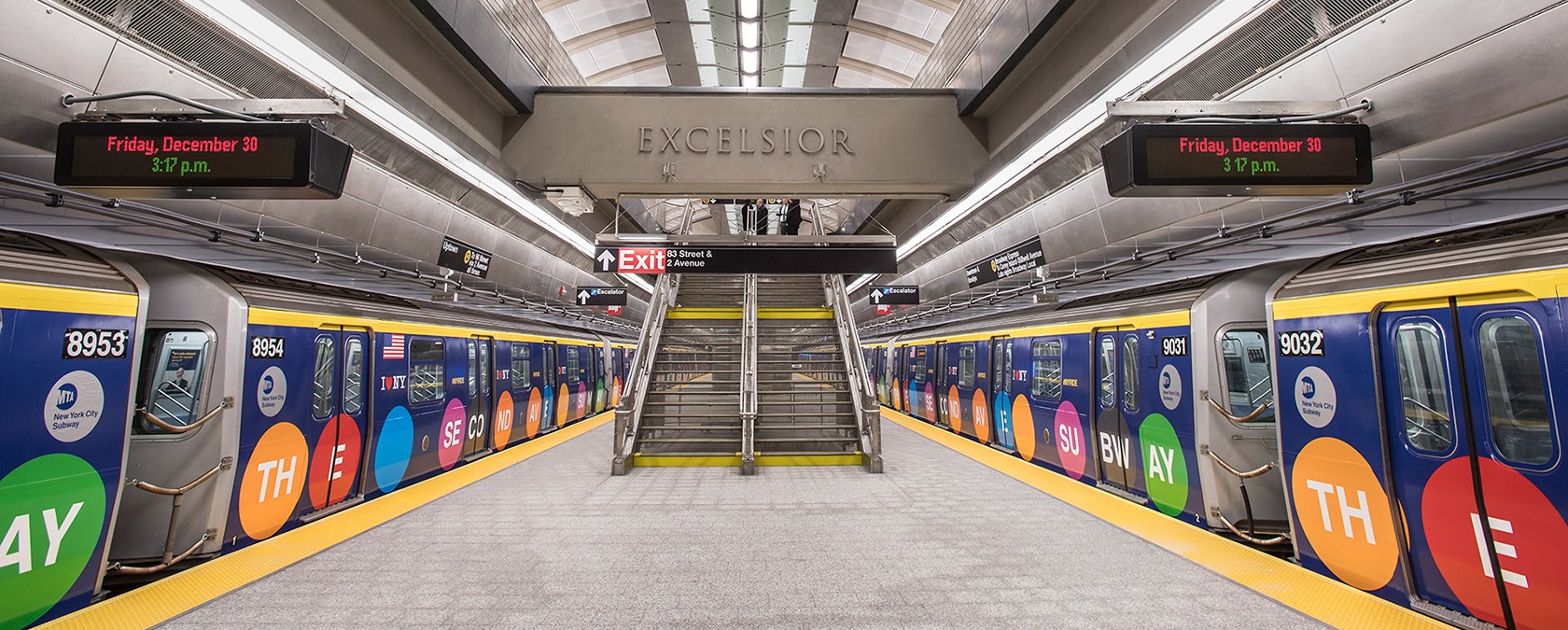Cost of Major Transit Projects Including the Second Avenue Subway Deliver More Value Per Rider Than Comparable Projects
MTA Has Taken Action to Reduce Costs of Capital Projects; LIRR Third Track Project Coming in $100 Million Under Budget
Metropolitan Transportation Authority (MTA) Construction & Development President Jamie Torres-Springer today provided an update to the MTA Board on the Authority’s capital construction costs. The presentation focused on the MTA’s historic $55 billion 2020-2024 Capital Plan, which is comprised of 83% core infrastructure and 17% expansion projects. The cost of core infrastructure projects – which includes track replacement, ADA accessibility, and power substations – are in line with peer systems in the United States. And MTA expansion projects such as the Second Avenue Subway deliver more value per rider than many national and global peers.
“Dating back to my time at the helm of MTA Construction & Development, I have been committed to on-time and cost-effective delivery of upgrades and expansions of the transit system,” said MTA Chair and CEO Janno Lieber. “Today’s presentation makes clear that investing in mass transit is a greater value proposition in New York than in peer cities, especially when considering the strong ridership demand we’ve seen with projects like the Second Avenue Subway.”
“The creation of MTA Construction & Development was itself a cost containment measure, streamlining capital program functions into one world-class agency and creating the tools to manage projects effectively from start to finish,” said MTA Construction & Development President Jamie Torres-Springer. “This year, we've seen the results of that effort, like the completion of LIRR Third Track on-time and under-budget. New York is an expensive place to build, but MTA C&D is aggressively attacking cost-drivers. We will continue to deliver both core infrastructure and expansion projects better, faster, and cheaper."
Project Costs in U.S. and International Context
Torres-Springer’s presentation highlighted the cost of transit expansion projects such as the Second Avenue Subway Phase 1 -- completed in 2016 -- providing national and international context on the external factors driving costs, as well as the strong per-rider value presented by these expansion projects. While the $2.95 billion cost per mile of the Second Avenue Subway Phase 1 exceeds that of national and global peers, when factoring in the expansion’s 200,000 daily ridership in the first phase, the $31,000 cost per average daily rider is significantly below projects in San Francisco, London, and Los Angeles. On accessibility upgrades, the MTA’s elevator costs on recent ADA upgrades are in line with peer system benchmarks.
Factors Driving Project Costs
Project costs are driven by the unique constraints of building large capital projects in New York. These include factors where MTA has limited control – such as high costs of property acquisition, logistics, and utilities, high regional labor and materials costs, operating constraints and regulations, and the necessary scope and design to meet the needs of a 24/7 system with high ridership demands. For Second Avenue Subway Phase 1, these factors alone accounted for 60% of the premium in cost per mile above peer system benchmarks.
Reducing Costs
The MTA is actively working to reduce costs on all fronts. The implementation of design build, the reduction in red tape, and appointing dedicated and empowered project CEOs were all proposals from the MTA Board that have been adopted and will drive cost reduction and efficiencies in future capital projects. Cost reductions are also being achieved by reducing unnecessary project scope where possible; for Second Avenue Subway Phase 2, this principle has resulted in a $1 billion reduction in savings. To control regional labor costs, MTA C&D has reached a historic agreement with union partners on the Park Avenue Viaduct replacement project.
MTA Construction & Development shared success stories on reducing capital costs on major projects completed in recent years. Strategies to reduce costs have proven successful on recent large-scale projects, including the LIRR Third Track, the Penn Station LIRR Concourse modernization project, and the Canarsie Tube Train repair project. In 2021, median awarded contracts came in 8% below MTA estimates. These successful projects represent a roadmap for the future of capital projects at the MTA, with on-time delivery and meaningful cost-containment.
